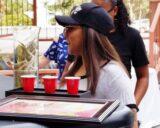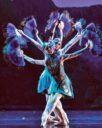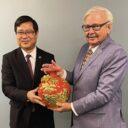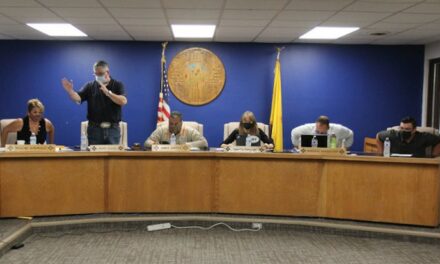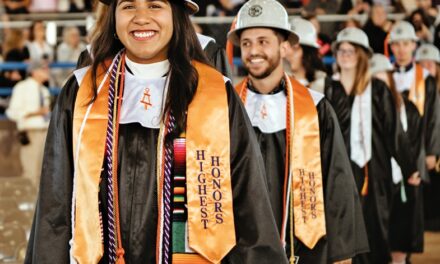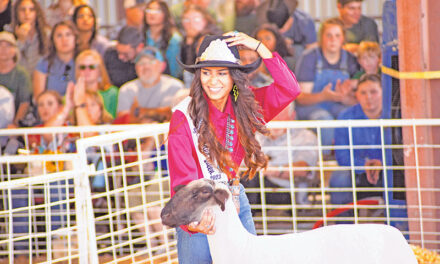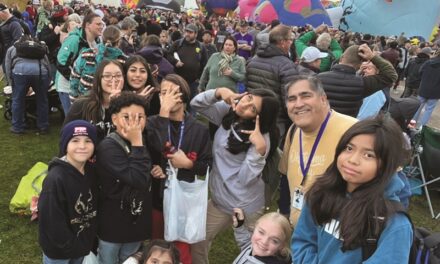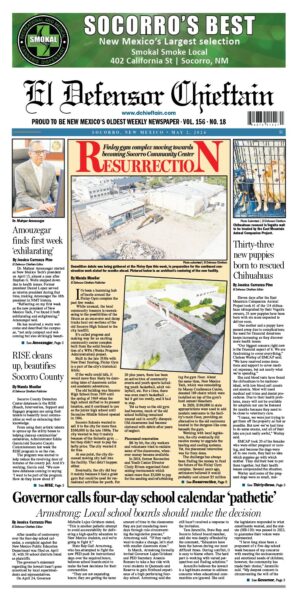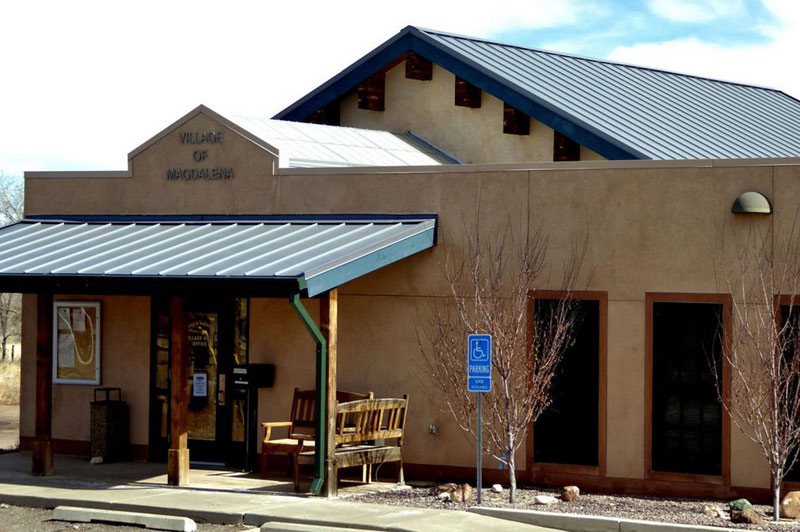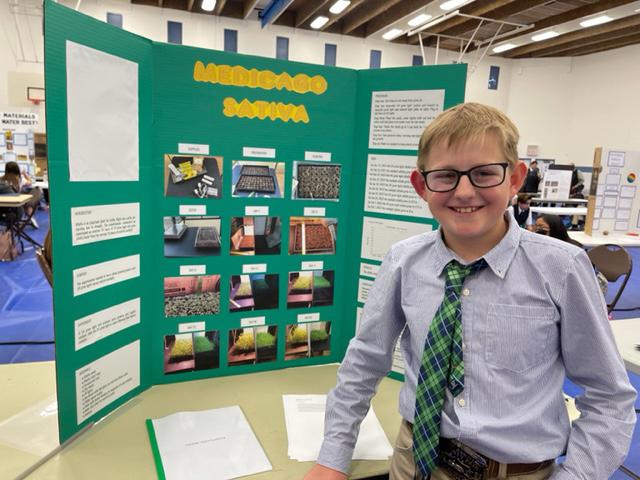
Harry Lee, a sixth grader at Milan Elementary, posed with his project, “Madicago Sativa,” the scientific name for alfalfa. Lee’s project examined sunlight’s effect on the plant.
The 22nd century’s environmental, medical, and technical challenges will likely be no match for the latest group of rising stars to emerge from a statewide competition of future scientists and engineers. Students from across the state of New Mexico – 73 senior high schoolers and 77 from middle schools — participated in the 70th annual New Mexico State Science Fair April 1 and 2 at New Mexico Tech.
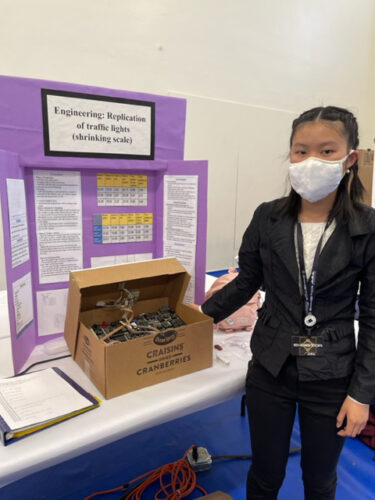
Katie Tran, a 10th-grader at the Albuquerque School of Excellence, replicated traffic lights, looking into their timing.
This year’s Grand Award was renamed the Richard N. Overdorf Grand Champion Award to honor the memory of Rick Overdorf, a Ruidoso High School science teacher who died April 2, 2021, after a five-year cancer battle. The award represents the highest honor of the competition in recognition of the project that stands out in terms of rigor and creativity, and acknowledges the effort necessary to carry it out.
According to Sharon Sessions, Ph.D., science and engineering fair director and New Mexico Tech physics professor and outreach director, the award was renamed for Overdorf at the request of one of his former students who wanted to honor his inspirational career — he accompanied generations of high school students to the competition and attended more than 10 international science and engineering fairs as a sponsor. Many of Overdorf’s former students attribute their decisions to pursue careers in science to their teacher.
“Ever dedicated to his students, Rick was fearless in taking on the projects that interested them and wouldn’t hesitate to spend countless nights and weekends assisting them in carrying out complex experiments where he would often use his own financial resources to facilitate their completion,” the donor said. “He cherished his role as a science educator and inspired his students to be bold, think big, and tackle challenges head-on.”
During the two-day competition, students presented papers and displayed information gleaned from their experiments on a wide variety of topics, covering animal and plant sciences; behavioral and social sciences; biology, biomedical, and health science; chemistry; mathematics; engineering and transportation; environmental sciences; physics and astronomy; and computer science. The creativity and innovation of their competition entries reflected current issues, such as the COVID-19 pandemic and mask-wearing – to practical topics, such as the effectiveness of cleaning products and eliminating bacteria from toothbrushes. Project topics reflected students’ varied interests, from aviation and rocketry to music, cooking, and pets.
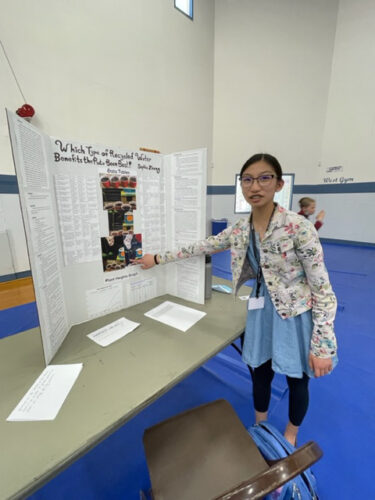
Sophia Zhang, a seventh-grader at the Albuquerque School of Excellence, displays her project that used different types of recycled water – including coffee water and dish soap water on pinto beans to see if it affected their growth.
Many students said they expected their participation in the science and engineering fair will help them discern their vocation. Tate Plohr, a seventh-grader at Los Alamos Middle School, studied the relationship between the boiling of water and altitude and said he is considering his career path.
“I would love to be a scientist — maybe a physicist,” he said
Konik Pearl, who attends Albuquerque Institute for Mathematics and Science Middle School in Albuquerque, is exploring an aerospace engineering career. His science and engineering project examined slow-speed flight and the difference made by the shape of the wings, potentially explaining why some planes crash. Pearl said he sought an airfoil that could create lift at a slower speed.
“I am really interested in planes,” he said. “I spent a lot of time on the landing gear.”
Saphaire Gallegos, a senior at Laguna-Acoma Junior-Senior High School in Casa Blanca, said she will likely take a break after graduation this spring, then pursue becoming a plumber or electrician. Her science fair entry featured a miniature home security alarm system.
Charlie Strauss, who works in bioscience at Los Alamos National Labs, has judged entries for the science and engineering competition for the past six years and said that the competition helps students develop the vitally important career skill of presenting their own work confidently. Every year, Strauss said, students’ ingenuity and talent never fail to impress him.
“Some [of the entries] are real simple, but potentially very important,” he said. “For a lot of the kids, they get so excited.”

Saphaire Gallegos, a senior at Laguna-Acoma Junior-Senior High School in Casa Blanca, created a miniature home security alarm system.
